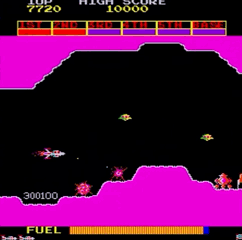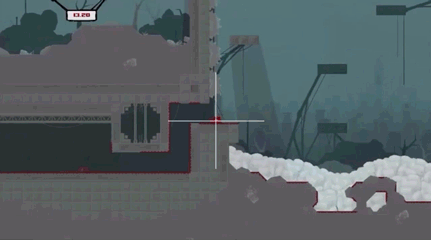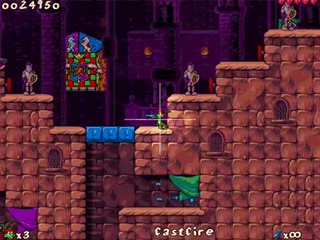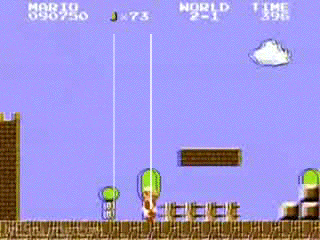$24
Camera Control Exercise Solved
Description
Your goal is to create several swappable camera control scripts for a top-down terraforming simulator.
Here is the document covered in class that details the type of camera controllers you are to implement for this exercise:
[Scroll Back: The Theory and Practice of Cameras in Side-Scrollers](https://www.gamedeveloper.com/design/scroll-back-the-theory-and-practice-of-cameras-in-side-scrollers) by Itay Keren.
The images in the *Exercise Stages* section are taken from Itay Karen's document.
Grading
Stages 1, 2, 3, and 4 are worth 15 points each. Stage 5 is worth 10 points. The stages are worth a total of 70 points. The remaining 30 points are for your peer review of another student's submission..
Due Date and Submission Information
See Canvas for the due date. This exercise will be submitted on GitHub Classroom. The master branch, as found on your individual exercise repository, will be evaluated.
Exercise Stages
The following are the basic criteria for each stage:
* Each stage requires you to implement a type of camera controller.
* The `Player` `GameObject` in the scene should always be referenced in the `target` serialized field.
* Each of your 5 controllers should inherit `AbstractCameraController` and be in the `Obscura` namespace.
* Each of your camera controller implementations should be added as a component to the `Main Camera` object in the hierarchy.
* You should bind the `Player` `GameObject` to the `Target` serialized field via the editor for each one of your cameras.
* Only one camera controller script on `Main Camera` should be enabled at any given time. (You can disable components of a `GameObject` by unchecking the box next to the component's name.)
* Most controllers will require you to expose fields to the Unity inspector to allow a designer to parameterize the controller's function (e.g. the size of a bounding box, the speed of scrolling, the rate of lerping, etc.). Each controller has its own list of required fields to serialize. Serialized variables should be `private` unless there is a particular need for them to have another access modifier. You can serialize any field in a C class by prepending a `[SerializeField]` meta-tag before the field's declaration. This can be seen in the `AbstractCameraController` abstract class.
* Each camera controller should use the `LineRenderer` required component to visualize the camera controller's logic when the `DrawLogic` serialized field is true. The lines should be drawn at the same `z` value as the `Player` `GameObject`. See the `PushBoxCamera` class for an example.
* Your camera controllers should be immediately testable by your peer-reviewer and should have `DrawLogic` set to true by default and in your submitted project.
Stage 1 - position lock: `PositionLockCameraController.cs`
This camera controller should always be centered on the `GameObject` referenced by the `target` member variable. There are no additional fields to be serialized and usable in the inspector.
Your controller should draw a 5 by 5 unit cross in the center of the screen when `DrawLogic` is true.
 as found in Terraria, ©2011 Re-Logic.
Stage 2 - framing with horizontal auto-scroll: `FrameAutoScrollCameraController.cs`
In the grand tradition of [shmups](http://www.shmups.com/), this camera controller implements a frame-bound autoscroller. The target should be able to move inside of a box constantly moving along the positive x-axis. If the target is lagging behind and is touching the left edge of the box, the target should be pushed forward by that box edge.
Your controller should draw the frame border box when `DrawLogic` is true.
Required serialized fields:
* `Vector2 topLeft` - the top left corner of the frame border box.
* `Vector2 bottomRight` - the bottom right corner of the frame border box.
* `float autoScrollSpeed` - the number of Unity units per second to scroll.
 as found in Scramble, ©1981 Konami.
Stage 3 - position lock with the camera following: `PositionFollowCameraController.cs`
This camera controller generally behaves like the position lock controller from Stage 1. The major difference is that it does not immediately center on the target as the target moves. Instead, it moves the camera's position toward the target's position on `LateUpdate()` with the target's speed times the `followSpeedFactor` (see below). When the distance between the target and the camera reaches `leashDistance`, the camera should move a the same speed as the target. When the target is not moving, the camera should move toward the target with `catchUpSpeed`. The camera should not move when the target is not moving and the camera and the target are in the same position.
Your controller should draw a 5 by 5 unit cross in the center of the screen when `DrawLogic` is true.
You may use lerp to manage camera motion.
Required serialized fields:
* `float followSpeedFactor` - The fraction of the target's movement speed that is set to the camera's chasing speed.
* `float leashDistance` - The camera should move at the same speed as the target when they are `leashDsitance` apart.
* `float catchUpSpeed` - The camera should move `catchUpSpeed` toward the target when the target is not moving.
 as found in Super Meat Boy, ©2010 Team Meat.
Stage 4 - smoothing target focus: `TargetFocusCameraController.cs`
This stage requires you to create a variant of the position-lock focus-smoothing controller. The variation is that the center of the camera leads the target in the direction of the target's movement. The position of the camera should move ahead of the target. This controller should update when movement input is given. When the target is not moving, the camera should not move until `IdleDuration` seconds have elapsed and should move toward the target with `returnSpeed`. The camera should not exceed `leadMaxDistance` from the target.
Your controller should draw a 5 by 5 unit cross in the center of the screen when `DrawLogic` is true.
You may use lerp to manage camera motion.
Required serialized fields:
* `float idleDuration` - the duration between when the target stops moving and when the camera begins to return to the target.
* `float returnSpeed` - the speed with which the camera returns to the target.
* `float leadSpeedMultiplier` - the multiplier applied to the target's speed that the camera moves toward the direction of the input.
* `float leadMaxDistance` - the maximum distance between the camera and the target in the x and y plane. Do not include z plane values in this distance calculation.
 as found in Jazz Jackrabbit 2, ©1998 Epic Games.
Stage 5 - 4-way speedup push zone: `FourWaySpeedupPushZoneCameraController.cs`
This camera controller should implement a 4-directional version of the speedup push zone as seen in Super Mario Bros. The controller should move at the speed of the `Player` multiplied by the `PushRatio` required serialized field in the direction of the target's movement when the target is 1) moving and 2) not touching the outer push zone border box. When the target is touching one side of the push zone border box, the camera will move at the target's current movement speed in the direction of the touched side of the border box and at the `PushRatio` in the other direction (e.g., when the target is touching the top middle of the pushing box but is moving to the upper right, the camera will move at target speed in the y direction but at the `PushRatio` in the x direction). If the target is touching two sides of the speedup push box (i.e., the target is in the corner of the box), the camera will move at full target speed in both x and y directions. To get the current speed or direction of the target, call the `GetCurrentSpeed()` and `GetMovementDiection()` methods from the `PlayerController`, respectively.
Your controller should draw the push zone border box when `DrawLogic` is true.
Required serialized fields:
* `float pushRatio` - the ratio that the camera should move toward `Player` when it is not at the edge of the push zone border box.
* `Vector2 topLeft` - the top left corner of the push zone border box.
* `Vector2 bottomRight` - the bottom right corner of the push zone border box.
 as found in Super Mario Bros., ©1985 Nintendo.
Resources and Hints
* [Unity Documentation for Vector3.Lerp](https://docs.unity3d.com/ScriptReference/Vector3.Lerp.html)
* [Additional interpolation methods](http://wiki.unity3d.com/index.php?title=Mathfx)



